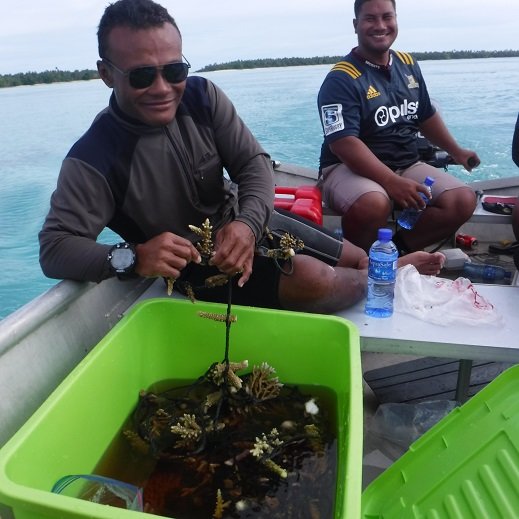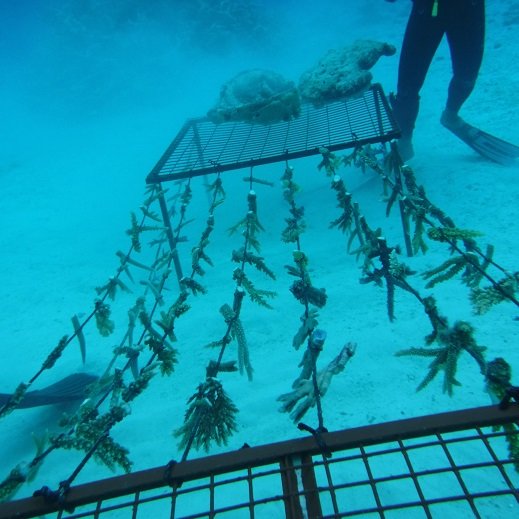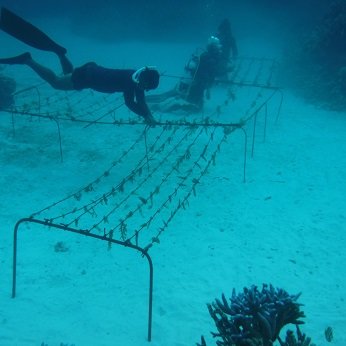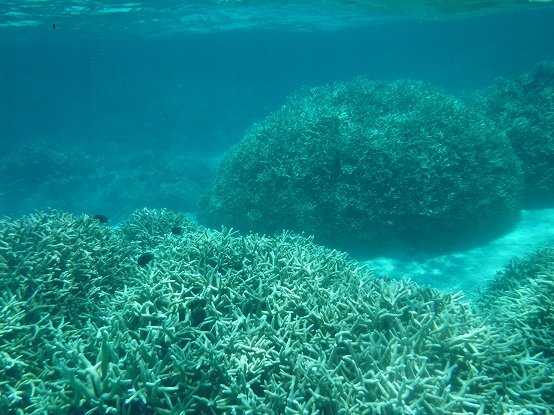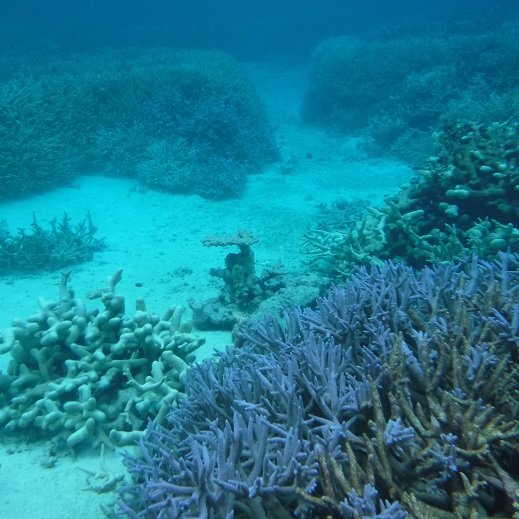By Dr. Austin Bowden-Kerby | Project Scientist, and defender of the corals
The mass bleaching continues unabated for the Gilbert Island chain, Kiribati, with the deep ocean waters over 35C or 95F since September, and most of the corals will now likely have died. But the sad thing is that no one has checked- there is no program- there is no plan. This is a natural disaster hidden below the waves and out of sight. We hope to do something, but are focusing on saving corals at this time, not on recording dead ones- it is so frustrating- like being a single medic in the midst of a massive battle.
The Line Islands, also part of Kiribati, experienced a 14-month bleaching in 2015-16, and >95% of their corals died, and we are the only ones working to bring those corals back. We last travelled there in December, on our fifth trip, and wonderful things are beginning to happen with the nursery work there. I will report on that work next time, and perhaps some on the Fiji work as well, or maybe write some extra reports. But for this report, I report on something even more important.
In September, I begin the coral adaptation work on Funafuti Atoll, funded by the government of Tuvalu. Afterwards, in October, reports of bleaching began to come in. However, the government budget was all spent, so they could not pay my way back so soon. In November, funded by you through GlobalGiving, I travelled once more to Tuvalu, to the great surprise of government officials, who willingly provided boats and materials. The Ministry of Fisheries and the traditional Kapule chiefs sent helpers for training, and it was a alot of fun. Wonderful lunches were provided by the Ridge to Reef program, while GlobalGiving covered the airfare from Fiji and helped with accommodation costs. Corals for Conservation, as always, provided the leadership and traing at no cost.
The coral reefs are indeed badly stressed with hot water, with temperatures of 33C recorded for the main lagoon, but fortunately most corals remained in a state of less severe bleaching, with most only partially bleached. But the bleaching since November has gotten worse, as expected based on reports. Local capacity has been built.
The emergency work on Funafuti focused on identifying hot pockets of water in the shallowest parts of the lagoon, and collecting samples of each unbleached coral found there, for re-loaction to cooler water nurseries.
Our experience on Christmas Island taught us that despite these corals located in the the hot pockets being the most bleaching resistant of all the corals, surviving in temperatures of 37-38 unbleached, the mass bleaching event can bring temperatures over 40C = 104F in the shallows, which is too hot for even the most resistant of the corals to survive. So the trip was a coral rescue mission. We were able to secure about 400 genotypes of branching corals in this manner.
Fortunately there are no Crown of Thorns starfish to worry about on these atolls, only some coral-eating Drupella snails, which can not reach the nursery ropes.
A second objective of the trip was to trial iron treatments- as a way of raising bleaching thresholds, as atoll environments are extremely low in iron, which weakens the corals. Two sections of reef were treated with slow-release iron chelate. The corals brought in to the nurseries were also treated in an iron chelate solution for an hour, as recommended by aquarium experts as a means of lessening bleaching caused by the stress of moving the corals during a period of warm waters and high uv.
The government has refilled their coffers and have now promiosed to pay my way back to Tuvalu in March for two weeks of follow up on Funafuti and expanding the nurseries to three additional atolls. I am eager to get back and to see how the nurseries are faring in the bleaching, and if the iron treatments have helped reduce coral mortality.
It is obvious that we greatly need traing in these countries for monitoring and coral adaptation programs, as well as a well funded multi-decade coral focused adaptation program. If these waters were USA or French territories, I can imagine that at the very least, monitoring would be taking place, and the seriousness of the bleaching and mass coral death would be reported.
But on the positive side, I was on BBC radio last week, and also on ABC TV Australia and Radio Australia- speaking about this work and the seriousness of the bleaching- and all in one week! I have added the links below.
The mass bleaching is now predicted to hit Samoa and Fiji by late March and April, and it is frustrating and scary, and I am feeling far too alone. But please know this: what we are doing is paving the way- proving methods and strategies that will one day benefit the coral reefs everywhere. I thank you from the bottom of my heart for your assistance.
Austin
Links:
Project reports on GlobalGiving are posted directly to globalgiving.org by Project Leaders as they are completed, generally every 3-4 months. To protect the integrity of these documents, GlobalGiving does not alter them; therefore you may find some language or formatting issues.
If you donate to this project or have donated to this project, you can receive an email when this project posts a report. You can also subscribe for reports without donating.
Support this important cause by creating a personalized fundraising page.
Start a Fundraiser